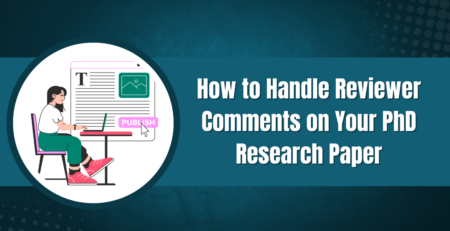Top 3 Research Methodologies Every PhD Scholars Should Know
Kenfra Research - Bavithra2025-07-18T09:31:19+05:30Whether you’re a PhD candidate or a postgraduate researcher, choosing the right research methodology is the backbone of your academic success. In fact, understanding the top 3 research methodologies every scholar should know is essential not just for conducting effective studies, but also for ensuring your research stands up to academic scrutiny.
From crafting your research design to analyzing your data, methodology influences every step. In this blog post, we’ll dive deep into the top 3 research methodologies —qualitative, quantitative, and mixed methods. We’ll also help you understand when and how to use them effectively.
What Are Research Methodologies?
Research methodologies refer to the structured strategies or frameworks used to conduct research. They guide the entire process—from formulating questions to analyzing data and drawing conclusions. Each methodology follows its own path and is best suited for specific types of inquiry.
The three most common types are:
- Qualitative Research Methodology
- Quantitative Research Methodology
- Mixed Methods Research Methodology
Each has unique strengths and is applied based on the research question, discipline, and desired outcomes.
1. Qualitative Research Methodology
What Is Qualitative Research?
Qualitative research is an exploratory method focused on understanding meaning, experience, and interpretation. It involves non-numerical data such as interviews, observations, focus groups, case studies, and content analysis.
For example, if you’re studying “how remote learning affects student motivation”, qualitative methods let you explore perceptions, experiences, and patterns that numbers alone can’t capture.
Key Features:
- Data collected through open-ended methods (interviews, observations)
- Interpretive and subjective
- Often used in social sciences, education, psychology, and cultural studies
Pros:
- Captures depth and detail
- Reveals hidden insights and participant perspectives
- Flexible and adaptive to changing field conditions
Cons:
- Not easily generalizable
- Time-consuming and resource-intensive
- Requires strong analytical and interpretive skills
Tools Used:
- NVivo for qualitative data analysis
- Manual coding frameworks
- Transcription and thematic analysis tools

2. Quantitative Research Methodology
What Is Quantitative Research?
Quantitative research focuses on measurable and numerical data. It is used to test hypotheses, look for statistical relationships, and draw general conclusions from large datasets.
This methodology is ideal when your study involves measurable variables. For example, if you’re researching “the correlation between study hours and academic performance,” quantitative methods are best suited for generating statistical evidence.
Key Features:
- Structured tools like surveys, questionnaires, and experiments
- Statistical analysis and hypothesis testing
- Focus on objectivity and replicability
Pros:
- Generalizable to larger populations
- Statistically reliable and valid
- Easier to replicate
Cons:
- May overlook context or deeper meaning
- Less flexible than qualitative methods
- Requires knowledge of statistical software
Tools Used:
- SPSS, R, Python (Pandas, NumPy)
- Excel with data analysis add-ons
- Online survey tools (Google Forms, Qualtrics)
3. Mixed Methods Research
What Is Mixed Methods Research?
Mixed methods research combines both qualitative and quantitative approaches to provide a more comprehensive understanding of the research problem. It helps bridge the gap between numbers and narratives.
For example, if you’re researching “how online education impacts both academic outcomes and emotional well-being,” mixed methods let you quantify academic results and explore student experiences through interviews or focus groups.
Key Features:
- Integration of both numeric and textual data
- Can be sequential (one follows the other) or concurrent (simultaneous)
- Used in education, public health, business, and social sciences
Pros:
- Rich, well-rounded analysis
- Provides context to statistical findings
- Enhances credibility of results
Cons:
- Time-consuming and complex
- Requires expertise in both methodologies
- Integration of data can be challenging
Tools Used:
- Joint use of SPSS and NVivo
- Microsoft Excel and manual coding
- Data triangulation software platforms

How to Choose the Right Research Methodology
Ask the Right Questions:
- What is the nature of your research problem?
- Are you exploring, explaining, or evaluating?
- What kind of data will provide the best answers?
- Do you need depth (qualitative), breadth (quantitative), or both?
Match with Research Goals:
- Exploratory research → Qualitative
- Descriptive or experimental research → Quantitative
- Holistic understanding or triangulation → Mixed methods
Check Discipline Requirements:
Some fields lean heavily towards specific methods. For instance:
- Sociology and anthropology → qualitative
- Economics and engineering → quantitative
- Education and public health → mixed methods
Align Methodology with Purpose
The top 3 research methodologies every scholar should know—qualitative, quantitative, and mixed methods—form the backbone of effective academic research. Your choice of methodology will shape your thesis, your findings, and even your career trajectory.
At Kenfra Research, we help scholars across disciplines choose the right research approach tailored to their goals. Whether you’re drafting your PhD proposal, analyzing field data, or preparing for submission, your research methodology is not just a chapter in your thesis—it’s the foundation of your entire study.









Leave a Reply